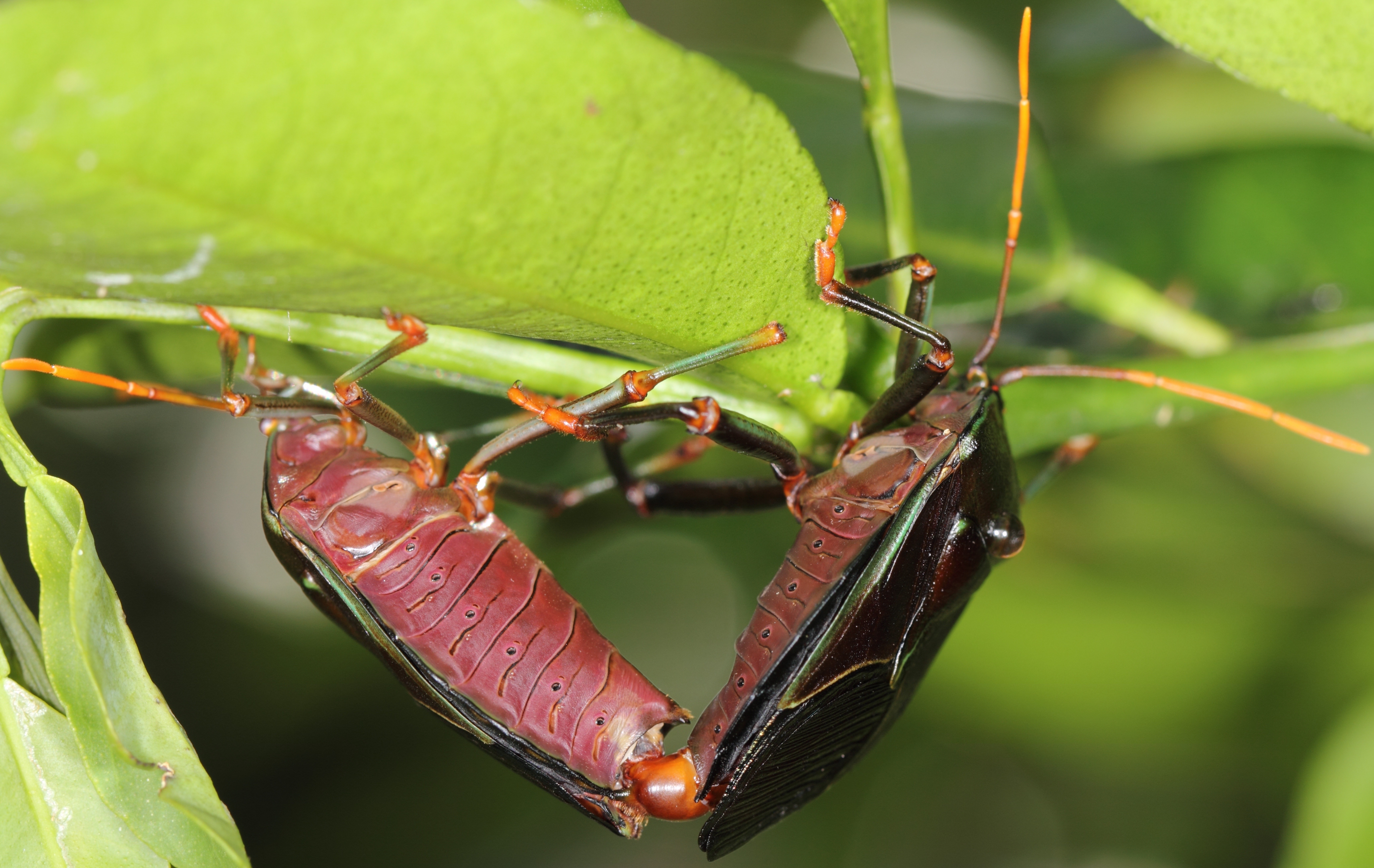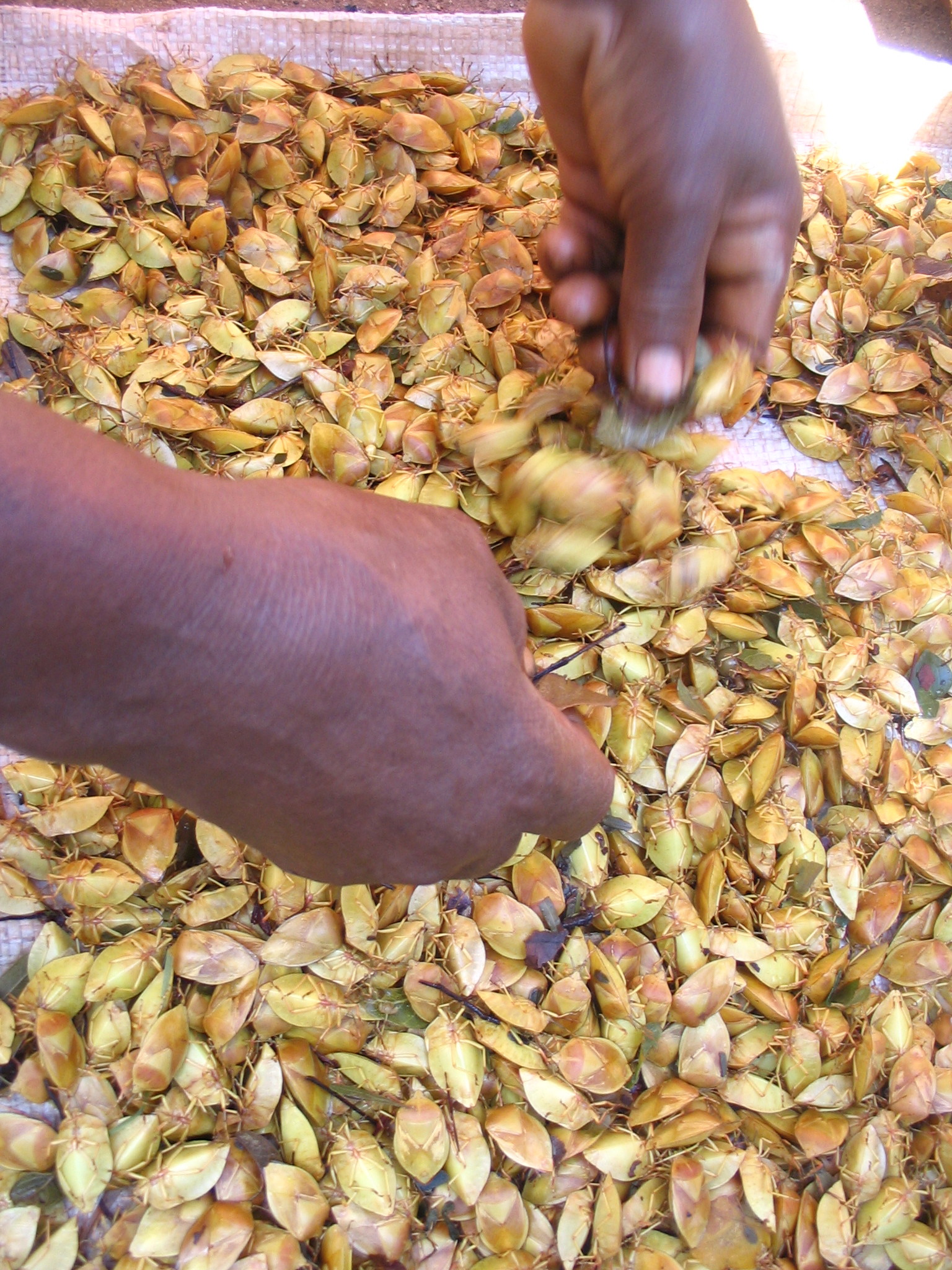|
Urostylididae
Urostylididae is a family of true bugs and is considered a Basal (phylogenetics), basal or "primitive" family within the stink-bug lineage. They are found only in Asia. Older works used the spelling Urostylidae but this clashes with the name used for a protozoan family and a spelling correction (Emendation (taxonomy), emendation) has been suggested that also avoids the confusion created by Homonym (biology), homonyms. The family name Urolabididae has also been used for some members in the past. This family has about 100 species, with distribution limited mainly to eastern Asia. Urostylidids are 4 to 15 mm and somewhat longer than broad with elongated legs, three tarsal segments, and a small head. The antenna has 5 segments of which the first is longer than the head. The base of the antenna has broad tubercles and has a ringed appearance. The simple eyes or ocelli, when present (''Urolabida'' lacks ocelli), are very close to each other. They show a wide separation between the ... [...More Info...] [...Related Items...] OR: [Wikipedia] [Google] [Baidu] |
Shield Bugs
The Pentatomoidea are a superfamily of insects in the Heteroptera suborder of the Hemiptera order. As Hemiptera, they share a common arrangement of sucking mouthparts. The roughly 7000 species under Pentatomoidea are divided into 21 families (16 extant and 5 extinct). Among these are the stink bugs and shield bugs, jewel bugs, giant shield bugs, and burrower bugs. Description The Pentatomoidea are characterised by a well-developed scutellum (the hardened extension of the thorax over the abdomen). It can be triangular to semielliptical in shape. The antennae typically have five segments. The tarsi usually have two or three segments. Shield bugs have prothoracic glands (in their thoraces, between the first and second pair of legs) that produce a foul-smelling liquid, which is used defensively to deter potential predators and is sometimes released when the bugs are handled. These prothoracic glands are also present in the nymphs, which are similar to adults except smaller ... [...More Info...] [...Related Items...] OR: [Wikipedia] [Google] [Baidu] |
Saileriolidae
Saileriolidae is a family of true bugs and is considered a basal or "primitive" family within the stink-bug lineage. They are found only in Asia. Originally included within the family Urostylididae Urostylididae is a family of true bugs and is considered a Basal (phylogenetics), basal or "primitive" family within the stink-bug lineage. They are found only in Asia. Older works used the spelling Urostylidae but this clashes with the name used ...,China, W.E., Slater, J.A. (1956) A new subfamily of Urostylidae from Borneo (Hemiptera: Heteroptera). Pacific science, 10(4): 410–414. the group has recently been recognized as a separate family-rank lineage. References Shield bugs Heteroptera families {{Pentatomoidea-stub ... [...More Info...] [...Related Items...] OR: [Wikipedia] [Google] [Baidu] |
Natalicolinae
Tessaratomidae is a family of true bugs. It contains about 240 species of large bugs divided into 3 subfamilies and 56 genera. Tessaratomids resemble large stink bugs (family Pentatomidae) and are sometimes quite colorful. Most tessaratomids are Old World, with only three species known from the Neotropics. Some members of Tessaratomidae exhibit maternal care of eggs and offspring. The defensive chemicals of certain species can cause significant damage if they come into contact with human skin; they may also cause temporary blindness. All species are exclusively plant-eaters, some of major economic importance as agricultural pests. A few species are also consumed as human food in some countries. Description Larger species of Tessaratomidae are known informally as giant shield bugs, giant stink bugs, or inflated stink bugs, but they generally do not have a collective common name and are referred to mostly as tessaratomids. Tessaratomids are ovate to elongate-ovate bugs. They ... [...More Info...] [...Related Items...] OR: [Wikipedia] [Google] [Baidu] |
Tessaratomidae
Tessaratomidae is a family of true bugs. It contains about 240 species of large bugs divided into 3 subfamilies and 56 genera. Tessaratomids resemble large stink bugs (family Pentatomidae) and are sometimes quite colorful. Most tessaratomids are Old World, with only three species known from the Neotropics. Some members of Tessaratomidae exhibit maternal care of eggs and offspring. The defensive chemicals of certain species can cause significant damage if they come into contact with human skin; they may also cause temporary blindness. All species are exclusively plant-eaters, some of major economic importance as agricultural pests. A few species are also consumed as human food in some countries. Description Larger species of Tessaratomidae are known informally as giant shield bugs, giant stink bugs, or inflated stink bugs, but they generally do not have a collective common name and are referred to mostly as tessaratomids. Tessaratomids are ovate to elongate-ovate bugs. They ra ... [...More Info...] [...Related Items...] OR: [Wikipedia] [Google] [Baidu] |
Emendation (taxonomy)
In zoological nomenclature, emendations are alterations made to the spelling of taxon names. In bacteriological nomenclature, emendations are made to the circumscription of a taxon. In zoology The change must be consciously made along with justification for altering the spelling originally used by the taxon author while describing the species. Any other spelling changes are considered to be unjustified. Valid emendations include changes made to correct: * typographical errors in the original work describing the species; * errors in transliteration from non-Latin scripts; * names that included diacritics or hyphens; * endings of species to match the gender of the generic name, particularly when the combination has been changed. The binomial authority In taxonomy, binomial nomenclature ("two-term naming system"), also called nomenclature ("two-name naming system") or binary nomenclature, is a formal system of naming species of living things by giving each a name composed of ... [...More Info...] [...Related Items...] OR: [Wikipedia] [Google] [Baidu] |
Leptopodidae
Leptopodidae is a family of spiny-legged bugs in the order Hemiptera. There are about 15 genera and more than 40 described species in Leptopodidae. Genera These 15 genera belong to the family Leptopodidae: * '' Erianotoides'' J.Polhemus & D.Polhemus, 1991 * '' Erianotus'' Fieber, 1861 * '' Lahima'' Linnavuori & Van Harten, 2002-22 * '' Leotichius'' Distant, 1904 * '' Leptopoides'' J.Polhemus & D.Polhemus, 1991-01 * '' Leptopus'' Latreille, 1809 * '' Martiniola'' Horváth, 1911 * '' Patapius'' Horváth, 1912 * '' Saldolepta'' Schuh & J.Polhemus, 1980 * '' Valleriola'' Distant, 1904 * † '' Archaesalepta'' Grimaldi & Engel, 2013 Cambay amber, India, Eocene * † '' Cretaceomira'' McKellar & Engel, 2014 Canadian amber, Campanian * † '' Cretaleptus'' Sun and Chen 2020 Burmese amber, Myanmar, Cenomanian * † '' Grimaldinia'' Popov & Heiss, 2014-29 Burmese amber, Myanmar, Cenomanian * † '' Leptosalda'' Cobben, 1971 Dominican amber, Mexican amber, Miocene The Miocene ( ) is ... [...More Info...] [...Related Items...] OR: [Wikipedia] [Google] [Baidu] |
Aradidae
Aradidae is a family of flat bugs, and a member of true bugs (Heteroptera). The common name for these insects refers to their dorsoventrally flattened bodies. With few exceptions, these cryptic insects are of no economic importance. This family occurs worldwide, with the most diversity occurring in Australia. Temperate species commonly live under the bark of dead trees, while many tropical species are found in leaf litter or on fallen twigs or branches. Most members of the family are thought to be mycophagous (fungus eating), but little is known of the feeding habits of most species. They can be attracted to the pheromones of bark beetles. Many of the tropical taxa are apterous. Flat bugs are distant relatives of the more familiar stink bug Stink bug or stinkbug is a common name for several insects and may refer to: * Any of several bugs in the true bug (hemipteran) family Pentatomidae Pentatomidae is a family of insects belonging to the order Hemiptera, generally c ... [...More Info...] [...Related Items...] OR: [Wikipedia] [Google] [Baidu] |
Spermatheca
The spermatheca (pronounced plural: spermathecae ), also called receptaculum seminis (plural: receptacula seminis), is an organ of the female reproductive tract in insects, e.g. ants, bees, some molluscs, oligochaeta worms and certain other invertebrates and vertebrates. Its purpose is to receive and store sperm from the male or, in the case of hermaphrodites, the male component of the body. Spermathecae can sometimes be the site of fertilization when the oocytes are sufficiently developed. Some species of animal have multiple spermathecae. For example, certain species of earthworms have four pairs of spermathecae—one pair each in the 6th, 7th, 8th, and 9th segments. The spermathecae receive and store the spermatozoa of another earthworm during copulation. They are lined with epithelium and are variable in shape: some are thin, heavily coiled tubes, while others are vague outpocketings from the main reproductive tract. It is one of the many variations in sexual reproduct ... [...More Info...] [...Related Items...] OR: [Wikipedia] [Google] [Baidu] |
Homonym (biology)
In biology, a homonym is a name for a taxon that is identical in spelling to another such name, that belongs to a different taxon. The rule in the International Code of Zoological Nomenclature is that the first such name to be published is the senior homonym and is to be used (it is " valid"); any others are junior homonyms and must be replaced with new names. It is, however, possible that if a senior homonym is archaic, and not in "prevailing usage," it may be declared a ''nomen oblitum'' and rendered unavailable, while the junior homonym is preserved as a ''nomen protectum''. :For example: :* Cuvier proposed the genus ''Echidna'' in 1797 for the spiny anteater. :*However, Forster had already published the name ''Echidna'' in 1777 for a genus of moray eels. :*Forster's use thus has priority, with Cuvier's being a junior homonym. :*Illiger published the replacement name ''Tachyglossus'' in 1811. Similarly, the International Code of Nomenclature for algae, fungi, and plants ( ... [...More Info...] [...Related Items...] OR: [Wikipedia] [Google] [Baidu] |
William Sweetland Dallas
William Sweetland Dallas (1824–1890) was a British zoologist and curator. He curated collections at the British Museum and the Yorkshire Philosophical Society, and was editor of the '' Popular Science Review''. Biography He was appointed Keeper of the Yorkshire Museum in 1858, at the age of 31 and already married with four children at the time. Dallas was an editor and translator for the ''Zoological Record'', the ''Annals and Magazine of Natural History'' and the ''Popular Science Review''. In 1868 he was elected to the post of Assistant Secretary of the Geological Society, resulting in his resignation from the role of Keeper. Notably, he translated ''Facts and Arguments for Darwin'' by German biologist Fritz Müller into English. He also translated Karl Theodor Ernst von Siebold's ''Wahre Parthenogenesis bei Schmetterlingen und Bienen (1856)'' into English as ''On a true parthenogenesis in moths and bees'' and created the index for Charles Darwin's ''The Variation o ... [...More Info...] [...Related Items...] OR: [Wikipedia] [Google] [Baidu] |


